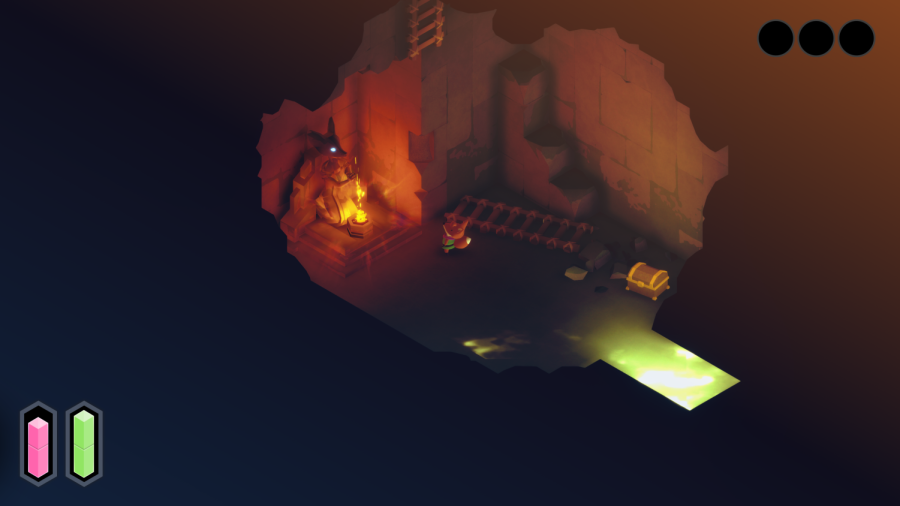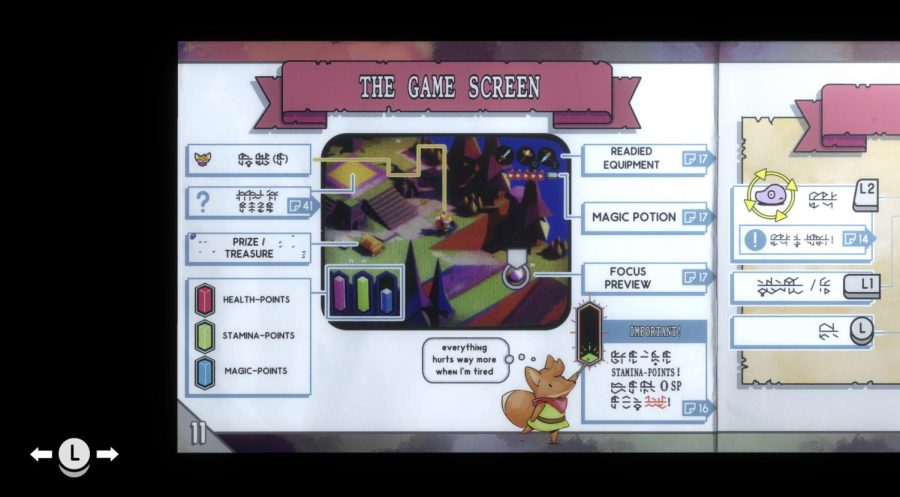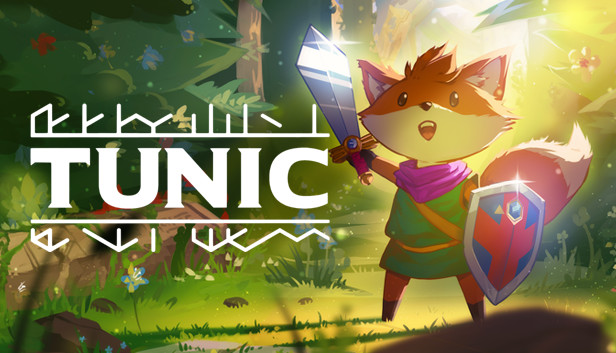“Tunic” is a love letter to classic adventure games
“Tunic” is an indie adventure game where players can solve puzzles, fight monsters and explore countless secrets. (Photo courtesy of Finji, LLC)
December 7, 2022
Indie game developers and studios have recently mimicked the appearance of retro video games as a creative and financial choice. Games like “Shovel Knight” and “Undertale” exploded in popularity because they reflected their inspirations in a modern context and many other creators began to follow suit. There is a certain charm and creativity in older video games that we don’t see anymore in their modern counterparts. However, there is an overabundance of retro-looking indie games that only use the aesthetic of older games without commenting on what video games used to be.
“Tunic” was largely developed by one game designer, Andrew Shouldice, over the course of seven years. It is an isometric 3D-adventure game that will certainly remind the player of the first few games in “The Legend of Zelda” series from the look of its setting alone.
You play as a small fox wearing a green tunic who wakes up on the shore of an expansive land. As you explore, you find shortcuts, useful items and a wide array of different enemies that populate the locations you will find on your journey.
The art style of this game is extremely cute, with a unique angular design to buildings and the overall layout of the map. Despite its use of a grid layout, “Tunic” effortlessly defies expectations with its modern and fresh map designs.
The beginning of the game involves finding items to gain access to new locations as well as finding two bells to open the mysterious gate you find in the middle of the main overworld. I dare not spoil anything past this point because one of the triumphs of this game is how well it surprises the player.

This game is quite difficult in its enemy encounters. It translates the brutal difficulty of older video games into a better-implemented gradual difficulty curve matching current games. Instead of impossible encounters that feel like design mistakes, “Tunic” resolves the feeling of frustration with fun but challenging battles. “Tunic” creates a gameplay honoring the challenge of games from the late 20th century without the chore of aged game design.
This evolution is best seen in the game’s puzzles. Throughout the adventure, you collect shimmering pages scattered across the world. This item is revealed to be pages to a game manual, one that harkens back to the small booklets you would find for any game before 3D games took over. As you collect these pages, they begin to reveal aspects of the game that weren’t apparent thus far, leaving it up to you and these select pages to gain the insight needed to complete the puzzles.
What is absolutely brilliant about this game mechanic is that older games were often unable to tell the player how to play them. These games were reliant on the physical game manual to communicate how the game worked and how to play it properly. Having pages in the game reveal solutions or methods to reach puzzles is a perfect way to incorporate the feeling of playing a classic adventure game in something new and unique.
This game often alludes to the fact it knows it’s a game. Not only do you collect the manual for it, but when pulling up the menu to read it, you can briefly see the game morph into a pixelated version of itself seen through the scan lines of a cathode-ray tube TV. The small amount of story “Tunic” does offer to the player tells the tale of a ruined land. A world once thrived is now desolate, with previous heroes nowhere to be found. This story comments on the idea that exciting aspects of classic games have been forgotten.

“Tunic” is my favorite game of the year.
It is a brilliantly crafted adventure that enticed me with its mystery and addictive gameplay much more than anything else released over the past 12 months. It sent me back to those endless nights during high school when I stayed up late playing the original “The Legend of Zelda” with a collection of scribbled notes, trying to decipher its clues.
“Tunic” takes the best aspects of those older titles we cherish and creates an experience not weighed down by the burden of time or bad game design. It fully confronts our nostalgia with video games of the past and suggests a future for games that can hold unlimited creativity. I am pleased to give this the highest recommendation I can muster with a perfect 10 out of 10.
If you are able to find the time for a new game, I implore you to grab this one, get a notebook and pen and let yourself fall into this world and its secrets. You won’t regret it.

















